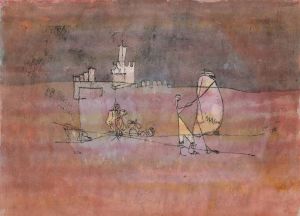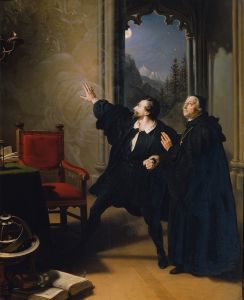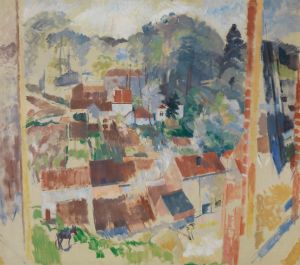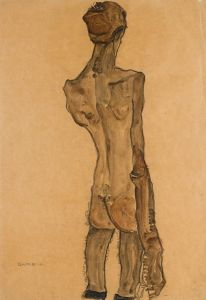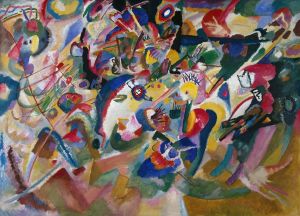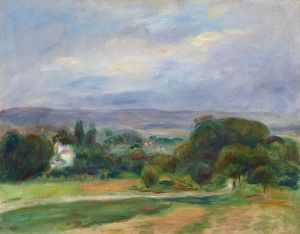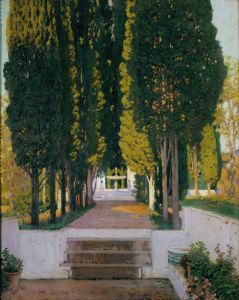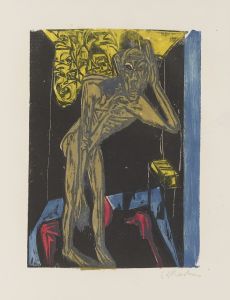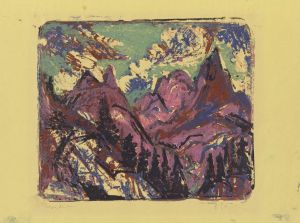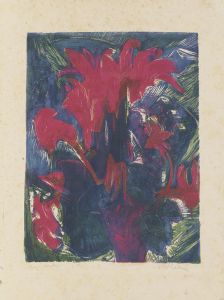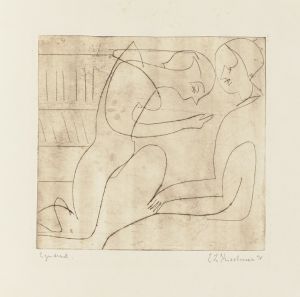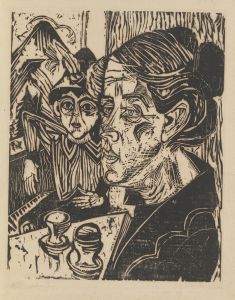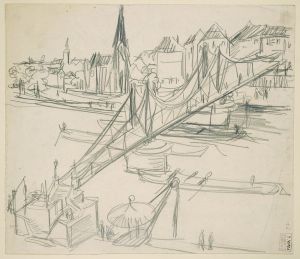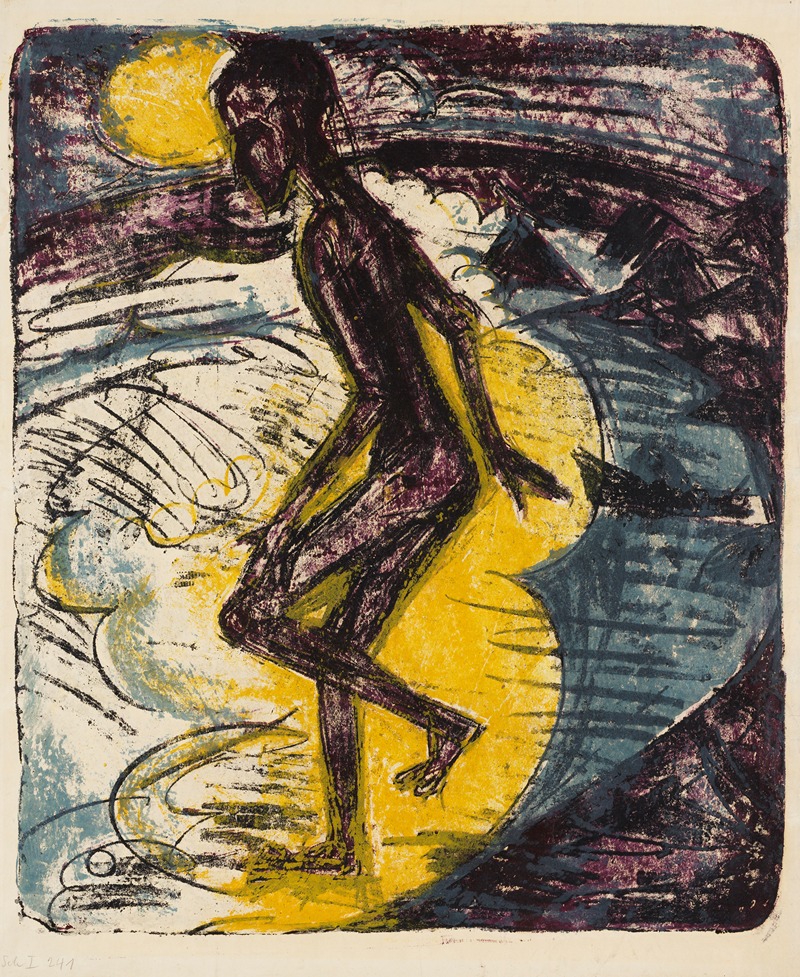
Ins Meer Schreitender
A hand-painted replica of Ernst Ludwig Kirchner’s masterpiece Ins Meer Schreitender, meticulously crafted by professional artists to capture the true essence of the original. Each piece is created with museum-quality canvas and rare mineral pigments, carefully painted by experienced artists with delicate brushstrokes and rich, layered colors to perfectly recreate the texture of the original artwork. Unlike machine-printed reproductions, this hand-painted version brings the painting to life, infused with the artist’s emotions and skill in every stroke. Whether for personal collection or home decoration, it instantly elevates the artistic atmosphere of any space.
"Ins Meer Schreitender" (Striding into the Sea) is a painting by the German expressionist artist Ernst Ludwig Kirchner. Created in 1912, this work exemplifies Kirchner's distinctive style, characterized by bold colors, dynamic compositions, and a focus on the human figure. Kirchner was a founding member of the Die Brücke (The Bridge) movement, which sought to create a new form of artistic expression that bridged traditional and modern approaches.
The painting depicts a nude figure, likely a woman, striding confidently into the sea. The figure's posture and movement convey a sense of freedom and vitality, which are central themes in Kirchner's work. The background features a vibrant, almost abstract representation of the sea and sky, rendered in vivid hues of blue, green, and yellow. This use of color and form is typical of Kirchner's expressionist approach, which aimed to evoke emotional responses rather than depict realistic scenes.
Kirchner's work often explored themes of nature, the human body, and the relationship between the two. "Ins Meer Schreitender" is no exception, as it captures a moment of interaction between the figure and the natural world. The painting reflects Kirchner's interest in the primal and the instinctual, as well as his fascination with the idea of returning to a more natural state of being.
Ernst Ludwig Kirchner was born in 1880 in Aschaffenburg, Germany. He studied architecture in Dresden before turning to painting, and in 1905, he co-founded Die Brücke with fellow artists Fritz Bleyl, Erich Heckel, and Karl Schmidt-Rottluff. The group was instrumental in the development of German expressionism, and their work had a significant impact on the art world of the early 20th century.
Kirchner's career was marked by both critical acclaim and personal struggles. He served in World War I, an experience that had a profound effect on his mental health. After the war, he moved to Switzerland, where he continued to paint and draw inspiration from the natural landscape. Despite his achievements, Kirchner's later years were plagued by illness and depression, and he died by suicide in 1938.
"Ins Meer Schreitender" is a testament to Kirchner's skill as an artist and his ability to convey complex emotions through his work. The painting is held in high regard and is part of the collection at the Brücke Museum in Berlin, which houses many of Kirchner's works as well as those of his contemporaries in the Die Brücke movement.
Kirchner's legacy continues to influence modern art, and his works are celebrated for their boldness, emotional depth, and innovative use of color and form. "Ins Meer Schreitender" remains a powerful example of his artistic vision and his contribution to the expressionist movement.





